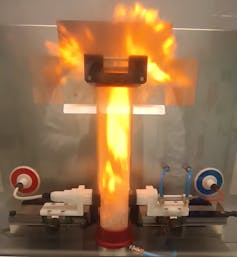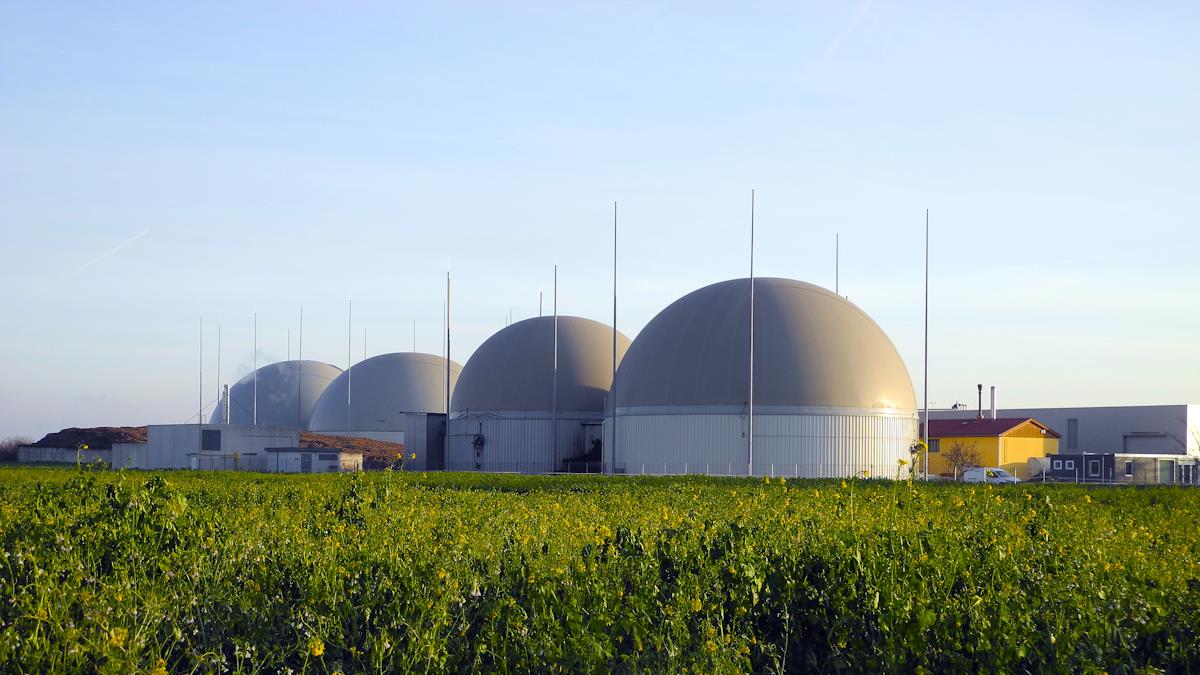Sébastien Leveneur, INSA Rouen Normandy and Valeria CASSON MORENO, University of Pisa
In 2008, the Sugar Imperial refinery in the United States exploded, killing 14 people: flying sugar dust in the packaging area caught fire. In 2014, a German factory producing biogas from agricultural waste suffered an explosion due to a methane build-up in the warehouse.
Today, biomass is used as a raw material in biorefineries: agricultural waste, forest residues, algae or even solids from wastewater are used, for example, to produce fuel, paints or plastics. These processes, if expanded, could make the chemical industry more sustainable by reducing its impact on the environment and our dependence on fossil resources, as long as they do not compete with the food sector.
However, green processes using biomass are not inherently safer than their counterparts using fossil materials.
Thus, economic interest should not be the only element driving the development of processes using biomass as feedstock: the research community is also working to make them safer for humans and the environment by studying their environmental and toxicological impacts and developing reliable methods for assessing industrial risks.
Biomass to reduce our dependence on oil
The chemical industry is still very dependent on fossil materials such as oil, coal and natural gas. Although it can be difficult to get an exact number, it is estimated that more than 90% of chemicals are still made from fossil fuels – which poses environmental (increased greenhouse gas emissions), geopolitical (energy dependency problem) and economic (price increases mainly due to resource depletion).
It was during the oil crises of the 1970s that the industry saw renewed interest in using biomass as a feedstock. These crises, for example, prompted the Brazilian government to launch programs such as “Proalcool”, which aimed to produce ethanol to replace gasoline and reduce their dependence on oil-exporting countries.
Gas and dust explosions
The main causes of reported accidents are in fact linked to unattended storage, where in the absence of adequate safety barriers there is a risk of fire and dust explosion – these explosions are caused by the rapid combustion of flammable particles suspended in the air.
The smaller the particles, the faster and more explosive the combustion.
If the ignited dust cloud is not contained, it will only cause a “flash” fire. However, if the ignited dust plume is contained, even partially, the heat of combustion can cause a rapid increase in pressure, causing the flame to spread through the dust plume and release large amounts of heat and reaction products.
For a fire to occur, three elements must come together: oxygen, fuel, and an ignition source; three factors that make up what we call the “fire triangle”.

In order for a dust explosion to occur, five elements are needed – we are talking about a pentagon: a fuel (combustible dust), an oxidizer (oxygen), a source of ignition, the ability to disperse and contain the dust.
Safety barriers rely on suppressing one of the vertices of a triangle or pentagon. Early detection of fires can be done using wireless temperature sensors for the temperature of, for example, biomass piles or separate piles with concrete walls. For dust explosions, silos can be inert.
In addition to the risks associated with gas or dust explosions, the risk of heat leakage was also observed in the laboratory. Thermal leakage corresponds to the increase in temperature in the tank in an uncontrolled and undesirable way, which can result in the destruction of the tank due to the increase in pressure due to the increase in temperature in an uncontrolled way, or the effect of a missile shooting the tank several kilometers.
Biomass recovery involves hydrogenation or oxidation steps that are particularly dangerous because they can be exothermic, i.e. release heat. These steps are found in biomass recovery processes, as they allow the molecules created from this biomass to be functionalized.
” The chemical industry has a recurring problem with reactivity-related accidents. This problem is due to the complex nature of chemical reactivity. » (Daniel A. Crowl, Professor Emeritus of Process Engineering at Michigan Tech in the United States)
This remark applies broadly to biomass valorization, as several “parasitic” reactions can take place that release energy (exothermic). For example, the functionalization of vegetable oils into epoxies, important intermediates for polymer production, can be interfered with by hydrogen peroxide, which can decompose to oxygen under certain conditions of temperature and concentration, leading to a rapid pressure build-up weakening the reactor.
We generally rely on feedback for industrial risk assessment – but this method requires processes to be widely used and deployed on an industrial scale, which is not yet the case for biomass. To fill this gap, we could turn to so-called “safety” probabilistic approaches that are already used in fields as diverse as oil and gas and nuclear power.
One of the main challenges of biomass valorization processes and biorefineries is the lack of feedback regarding risk analyzes and the implementation of safety barriers. Indeed, most risk analysis methods are based on feedback, and biomass recovery processes are newer than those using fossil materials. These analyzes are necessary to be able to industrialize these processes using laboratory data.
We have recently been able to use the ARAMIS (Accidentology and Risk Analysis Method for Industrial Systems) developed by INERIS to assess the risks for γ-valerolactone production. This method makes it possible to identify possible accident scenarios and thus refine the risk management of the plant, when safety barriers need to be selected and implemented.
Faced with a lack of feedback, other approaches are being developed. Probabilistic methods make it possible to evaluate and quantify the risks, uncertainties and probabilities associated with events or phenomena. They rely on probability theory for analysis and decision-making, taking into account inherent uncertainties.
For example, the risk of a dust explosion is the product of the probability that a dust explosion will occur and the consequences of a dust explosion. Consequences can be predicted using experiments or models, for example using simulation tools. The probability of an explosion is the product of the probability of finding an effective source of ignition (“minimum ignition energy”) and the probability of an explosive atmosphere (ie, the correct concentration of dust in the air). It can be calculated using a technique called “fault tree analysis” (fault tree analysis, FTA), born in the aerospace industry and increasingly popular in the chemical processing industry; it is a deductive logic model technique that generates a list of failure combinations that could cause an accident.
Sébastien Leveneur, Process Engineering, INSA Rouen Normandy and Valeria CASSON MORENO, Associate Professor of Chemical Engineering, University of Pisa
This article is republished from The Conversation under a Creative Commons license. Read the original article.
Key illustration main: Austria, agricultural biogas cultivation and rape fields in Lower Austria
(writing)

